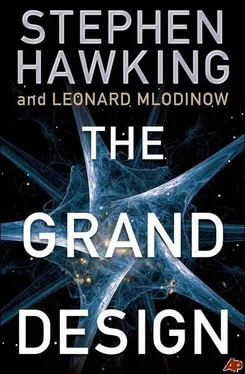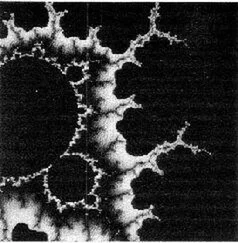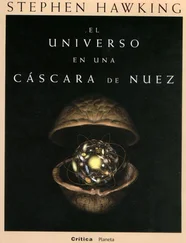To understand the universe at the deepest level, we need to know not only how the universe behaves, but why.
Why is there something rather than nothing?
Why do we exist?
Why this particular set of laws and not some other?
This is the Ultimate Question of Life, the Universe, and Everything. We shall attempt to answer it in this book. Unlike the answer given in The Hitchhiker’s Guide to the Galaxy, ours won’t be simply “42.”


***

Skoll the wolf who shall scare the Moon
Till he flies to the Wood-of-Woe:
Hati the wolf, Hridvitnir’s kin,
Who shall pursue the sun.
– “G RIMNISMAL,” The Elder Edda
IN VIKING MYTHOLOGY, Skoll and Hati chase the sun and the moon. When the wolves catch either one, there is an eclipse. When this happens, the people on earth rush to rescue the sun or moon by making as much noise as they can in hopes of scaring off the wolves. There are similar myths in other cultures. But after a time people must have noticed that the sun and moon soon emerged from the eclipse regardless of whether they ran around screaming and banging on things. After a time they must also have noticed that the eclipses didn’t just happen at random: They occurred in regular patterns that repeated themselves. These patterns were most obvious for eclipses of the moon and enabled the ancient Babylonians to predict lunar eclipses fairly accurately even though they didn’t realize that they were caused by the earth blocking the light of the sun. Eclipses of the sun were more difficult to predict because they are visible only in a corridor on the earth about 30 miles wide. Still, once grasped, the patterns made it clear the eclipses were not dependent on the arbitrary whims of supernatural beings, but rather governed by laws.
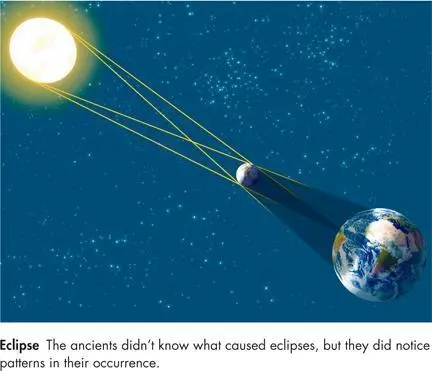
Despite some early success predicting the motion of celestial bodies, most events in nature appeared to our ancestors to be impossible to predict. Volcanoes, earthquakes, storms, pestilences, and ingrown toenails all seemed to occur without obvious cause or pattern. In ancient times it was natural to ascribe the violent acts of nature to a pantheon of mischievous or malevolent deities. Calamities were often taken as a sign that we had somehow offended the gods. For example, in about 5600 BC the Mount Mazama volcano in Oregon erupted, raining rock and burning ash for years, and leading to the many years of rainfall that eventually filled the volcanic crater today called Crater Lake. The Klamath Indians of Oregon have a legend that faithfully matches every geologic detail of the event but adds a bit of drama by portraying a human as the cause of the catastrophe. The human capacity for guilt is such that people can always find ways to blame themselves. As the legend goes, Llao, the chief of the Below World, falls in love with the beautiful human daughter of a Klamath chief. She spurns him, and in revenge Llao tries to destroy the Klamath with fire. Luckily, according to the legend, Skell, the chief of the Above World, pities the humans and does battle with his underworld counterpart. Eventually Llao, injured, falls back inside Mount Mazama, leaving a huge hole, the crater that eventually filled with water.
Ignorance of nature’s ways led people in ancient times to invent gods to lord it over every aspect of human life. There were gods of love and war; of the sun, earth, and sky; of the oceans and rivers; of rain and thunderstorms; even of earthquakes and volcanoes. When the gods were pleased, mankind was treated to good weather, peace, and freedom from natural disaster and disease. When they were displeased, there came drought, war, pestilence, and epidemics. Since the connection of cause and effect in nature was invisible to their eyes, these gods appeared inscrutable, and people at their mercy. But with Thales of Miletus (ca. 624 BC- ca. 546 BC) about 2,600 years ago, that began to change. The idea arose that nature follows consistent principles that could be deciphered. And so began the long process of replacing the notion of the reign of gods with the concept of a universe that is governed by laws of nature, and created according to a blueprint we could someday learn to read.
Viewed on the timeline of human history, scientific inquiry is a very new endeavor. Our species, Homo sapiens, originated in sub-Saharan Africa around 200,000 BC. Written language dates back only to about 7000 BC, the product of societies centered around the cultivation of grain. (Some of the oldest written inscriptions concern the daily ration of beer allowed to each citizen.) The earliest written records from the great civilization of ancient Greece date back to the ninth century BC, but the height of that civilization, the “classical period,” came several hundred years later, beginning a little before 500 BC. According to Aristotle (384 BC-322 BC), it was around that time that Thales first developed the idea that the world can be understood, that the complex happenings around us could be reduced to simpler principles and explained without resorting to mythical or theological explanations.
Thales is credited with the first prediction of a solar eclipse in 585 BC, though the great precision of his prediction was probably a lucky guess. He was a shadowy figure who left behind no writings of his own. His home was one of the intellectual centers in a region called Ionia, which was colonized by the Greeks and exerted an influence that eventually reached from Turkey as far west as Italy. Ionian science was an endeavor marked by a strong interest in uncovering fundamental laws to explain natural phenomena, a tremendous milestone in the history of human ideas. Their approach was rational and in many cases led to conclusions surprisingly similar to what our more sophisticated methods have led us to believe today. It represented a grand beginning. But over the centuries much of Ionian science would be forgotten-only to be rediscovered or reinvented, sometimes more than once.
According to legend, the first mathematical formulation of what we might today call a law of nature dates back to an Ionian named Pythagoras (ca. 580 BC-ca. 490 BC), famous for the theorem named after him: that the square of the hypotenuse (longest side) of a right triangle equals the sum of the squares of the other two sides. Pythagoras is said to have discovered the numerical relationship between the length of the strings used in musical instruments and the harmonic combinations of the sounds. In today’s language we would describe that relationship by saying that the frequency-the number of vibrations per second-of a string vibrating under fixed tension is inversely proportional to the length of the string. From the practical point of view, this explains why bass guitars must have longer strings than ordinary guitars. Pythagoras probably did not really discover this-he also did not discover the theorem that bears his name-but there is evidence that some relation between string length and pitch was known in his day. If so, one could call that simple mathematical formula the first instance of what we now know as theoretical physics.
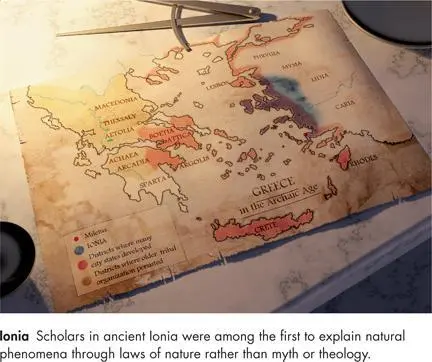
Apart from the Pythagorean law of strings, the only physical laws known correctly to the ancients were three laws detailed by Archimedes (ca. 287 BC-ca. 212 BC), by far the most eminent physicist of antiquity. In today’s terminology, the law of the lever explains that small forces can lift large weights because the lever amplifies a force according to the ratio of the distances from the lever’s fulcrum. The law of buoyancy states that any object immersed in a fluid will experience an upward force equal to the weight of the displaced fluid. And the law of reflection asserts that the angle between a beam of light and a mirror is equal to the angle between the mirror and the reflected beam. But Archimedes did not call them laws, nor did he explain them with reference to observation and measurement. Instead he treated them as if they were purely mathematical theorems, in an axiomatic system much like the one Euclid created for geometry.
Читать дальше
